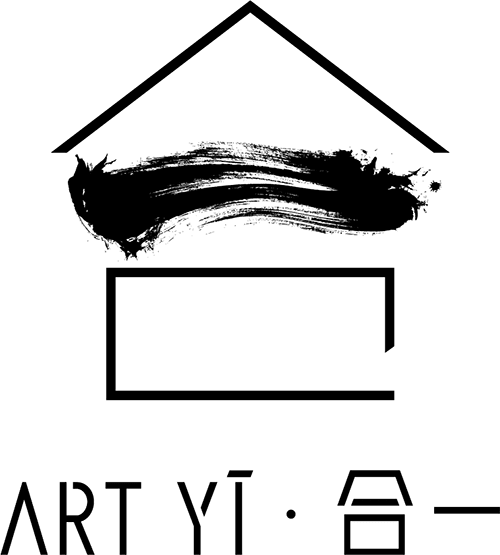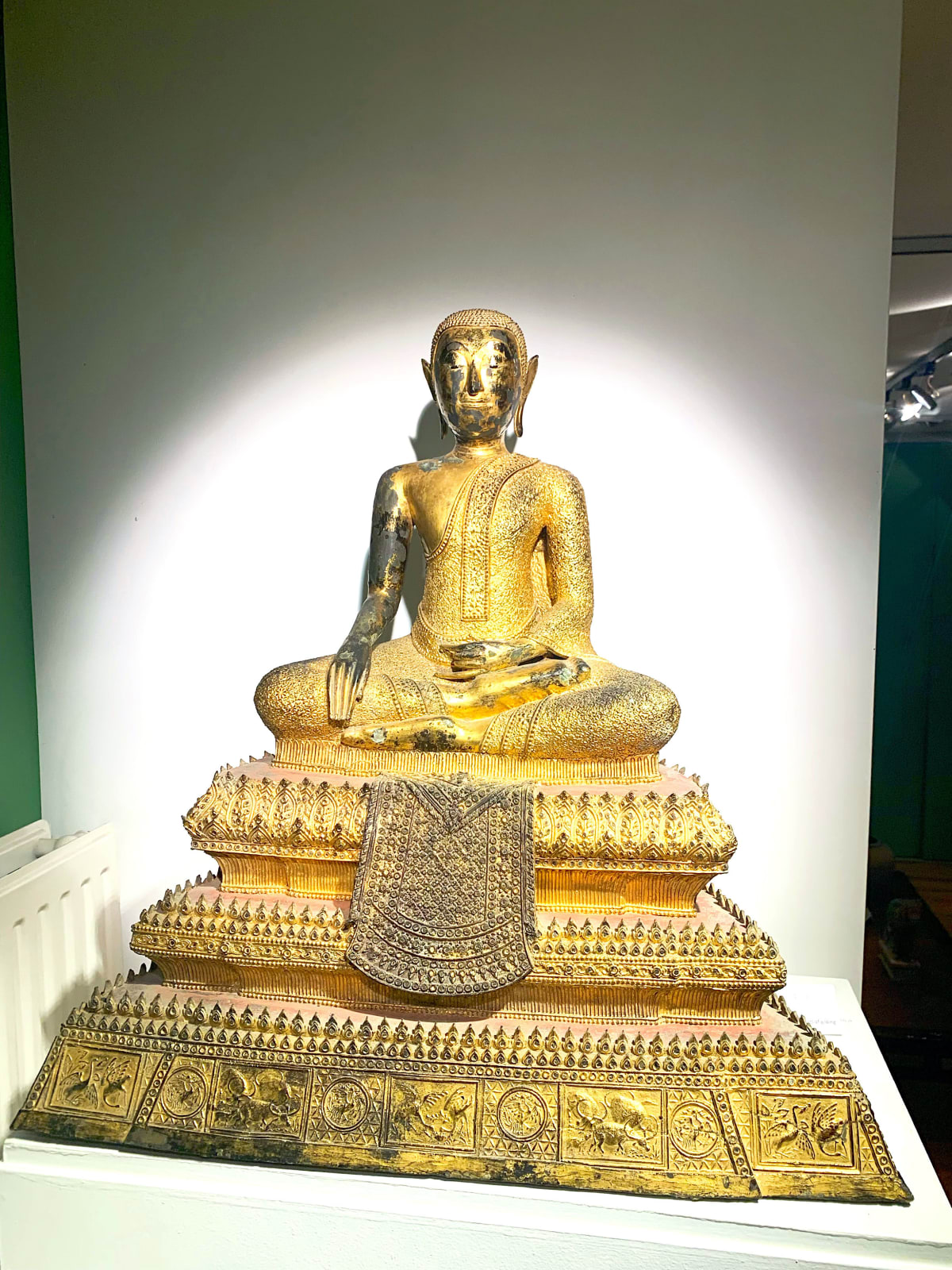Thailand Antiques 泰国古董
27 1/8 x 24 3/8 x 13 3/4 in
• Original Belgian Private Collection
• Free Worldwide Art Shipping (DDU)
• Professional Art Packing
• Full Insurance & Gallery Guarantee
• Certificate of Authenticity by Artist & Gallery
• Enquire a Welcome Offer for your 1st Collection
Further images
Bronze lacquered and gilded seated figure of a Buddha as a monk.
The Buddha is seated on a 3-tier Lotus throne, with his right leg folded over the left leg ,both feet up in the” VIRASANA Mudra”; his right hand, with equally measured fingers, touching the earth in what is called the “BHUMISPARSA Mudra” or touching the earth, also calling the earth to witness Mudra of Buddha conquering evil.
In his left hand he used to hold an open fan covering his face, which got lost over time.
He is depicted with elongated ears , tight curly hair ending in a straight line on his forehead, oval face, half open eyes, enigmatic smile. As he is depicted as a monk there is no “Ushnisa” and no flame on top of his head.
He is dressed in a monks robe covering only his left shoulder with a long almost belt like flap falling over the left shoulder, and decorated with tiny flowers which indicates a change from the earlier Ayuthaya period bronze Buddha figures.This large sculpture is in excellent condition with only minor loss of gilding.
The sculptural craftsmanship is clean and concise. The precise grasp of the physical state and perfect harmony makes the Buddha statue permeated with abundant vitality, achieves a vivid artistic effect, and reflects the tranquility and compassion of the Buddha and his inner world.
Provenance
The bronze sculpture is made in the lost wax method and is therefore unique. It is superbly crafted in 1 piece, indicative of the technical virtuosity of the artist. The sculpture still contains its original core mixture.
All Buddha sculptures depict an episode out of the life of the historic Buddha ( hence the long ears of the young bejeweled prince) and have to adhere to a strict canon. Despite the strict rules each period and each region even has developed its own style.
After the loss and destruction of the old capital of Ayuthaya in 1767 ( because of an attack of the Birmese), a new capital was set up in what is now Bangkok. A lot of the craftsmen were hauled off by the conquerors and a new start was needed. The new craftsmen used older pieces of the Ayuthaya and Sokhuthai period as examples to make up for their loss. So in the Ratanakosin or Bangkok period we see a mixture of styles, but slowly but surely also the development of their own style. One element is the more elaborate decorations. In this sculpture we see the start of this trend in the flowery decorations on the robe and the pedestals, clear lotus flowers on top tier of the throne, flames with set-in glass surrounding the 2 tier and flowers and stylized birds on the 3rd tier.
Exposities
Jul-Aug 2021: "Timeless" exhibition, Art Thema HéYī gallery, Brussels, BelgiumWelcome Offer for your 1st Art
• Get Membership offer for your 1st Collection !
• Free Global Art Shipping
• First access to our New Arts & Exhibitions
• VIP Entry for our Vernigssages & Art fairs
* denotes required fields
We will process the personal data you have supplied in accordance with our privacy policy (available on request). You can unsubscribe or change your preferences at any time by clicking the link in our emails.








